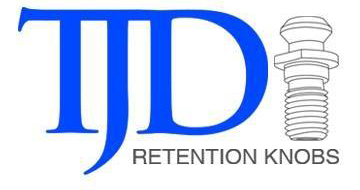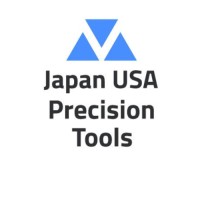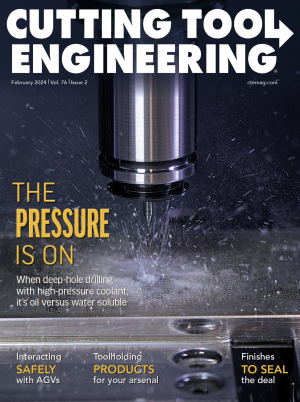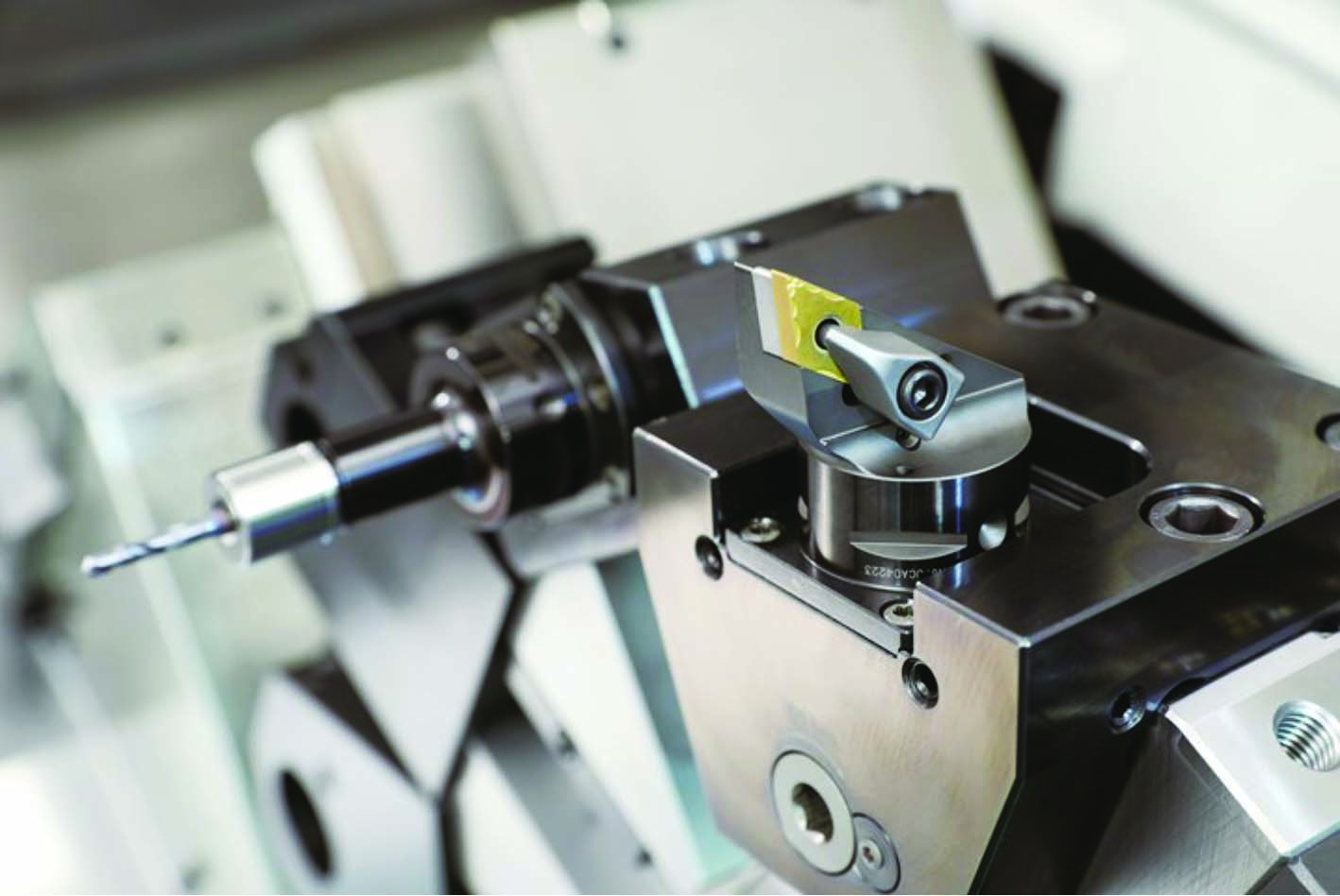
BIG DAISHOWA
With the introduction of its C3 program, BIG DAISHOWA recently expanded its BIG CAPTO toolholder line with the introduction of its C3 program, which is designed to increase efficiency and precision for small lathes.
The C3 series of MEGA NEW BABY chucks has a clamping range of 0.010” to 0.630” with a maximum RPM of 30,000. The chucks are said to be ideal for drills, reamers, taps and finishing end mills. Ultra-slim and strong, they provide reliable gripping for even the smallest workpieces.
The BIG CAPTO C3 square holders for turning applications come in left- and right-hand orientations. The C3-180-BH16R-2058 and C3-180-BH16L-2058 mono-block holders feature insert clamps that enhance rigidity and minimize vibrations and movement during cutting.
The new square toolholders are available in 90° and 180° types. The 90° type offers a variety of orientations, including perpendicular to the workpiece. Its compact design also allows for work in spaces that are tighter or have limited clearance. The 180° type allows the tool to machine harder-to-reach areas of the workpiece.
C3 boring bar holders also are available to clamp 6 mm, 8 mm, 10 mm or 12 mm boring bars. All turning toolholders feature through-spindle coolant.
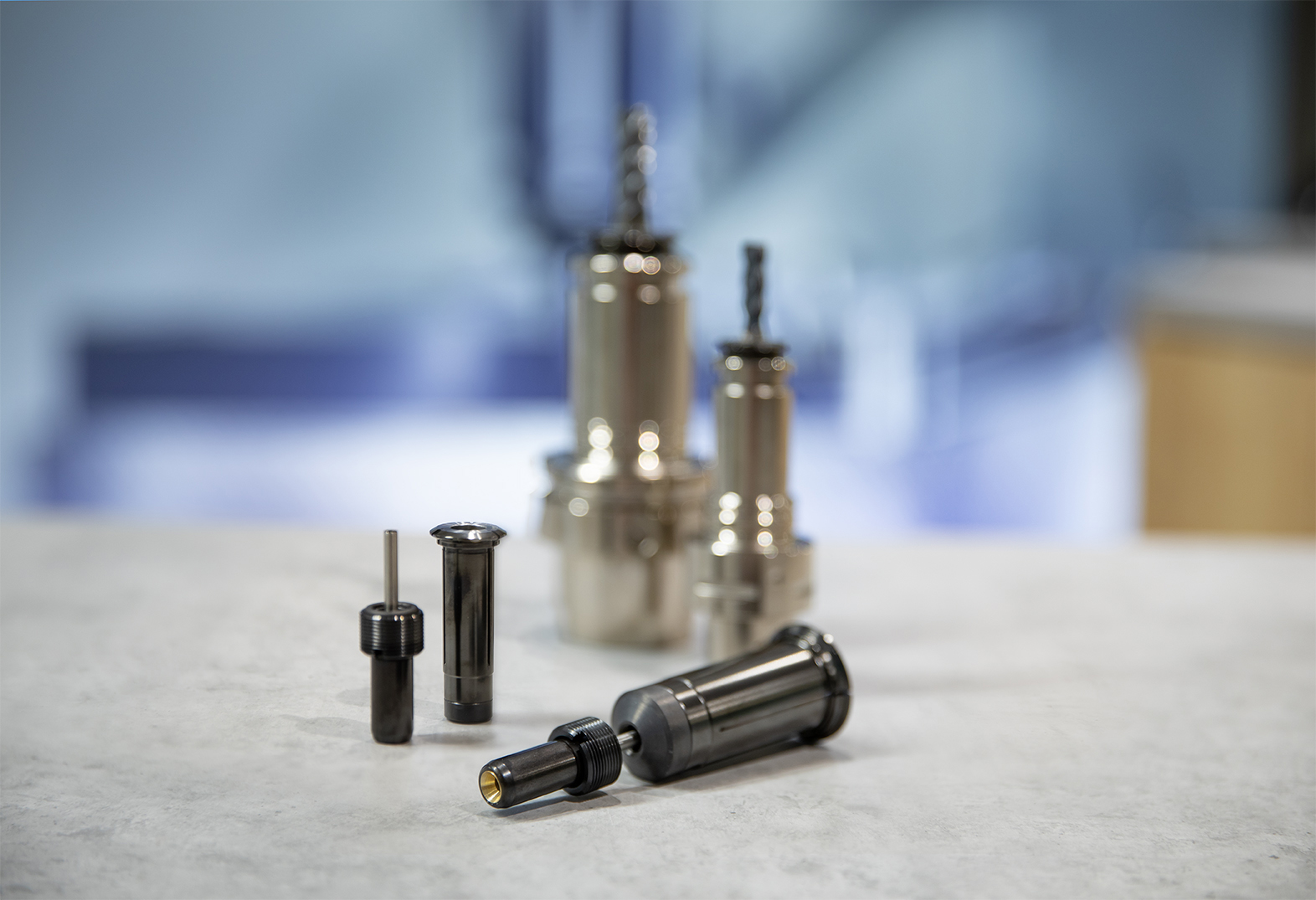
REGO FIX
REGO-FIX recently added minimum quantity lubrication (MQL) machining to its powRgrip (PG) toolholding system to help shops improve production and tool life by reducing coolant consumption and shortening cycle times.
MQL machining is a clean, sustainable manufacturing technique that directs an aerosol of compressed air and a minimal amount of cutting oil (<50 ml/h) directly to the cutting area. In addition to significantly reducing coolant consumption, MQL machining reportedly reduces cycle times anywhere from 25% to 85%, while also improving chip evacuation for better surface finish and tolerance, and increasing tool life.
The REGO-FIX standardized MQL PG collets are designed for tool shanks according to DIN 69090-3 and available for HSK-A 63 and HSK-E 40 toolholders. They are designed for machines using one-channel, internal through-spindle MQL systems and are beneficial for virtually any machining application.
In many cases, chamber and cross-section areas within a toolholding system create turbulence that causes an irregular air/coolant mix ratio in the aerosol. However, the REGO-FIX PG MQL solution uses a coolant tube fitted with a lance that directs the mixture through the collet and directly to the tool for reliable coolant distribution at the lowest consumption rate.
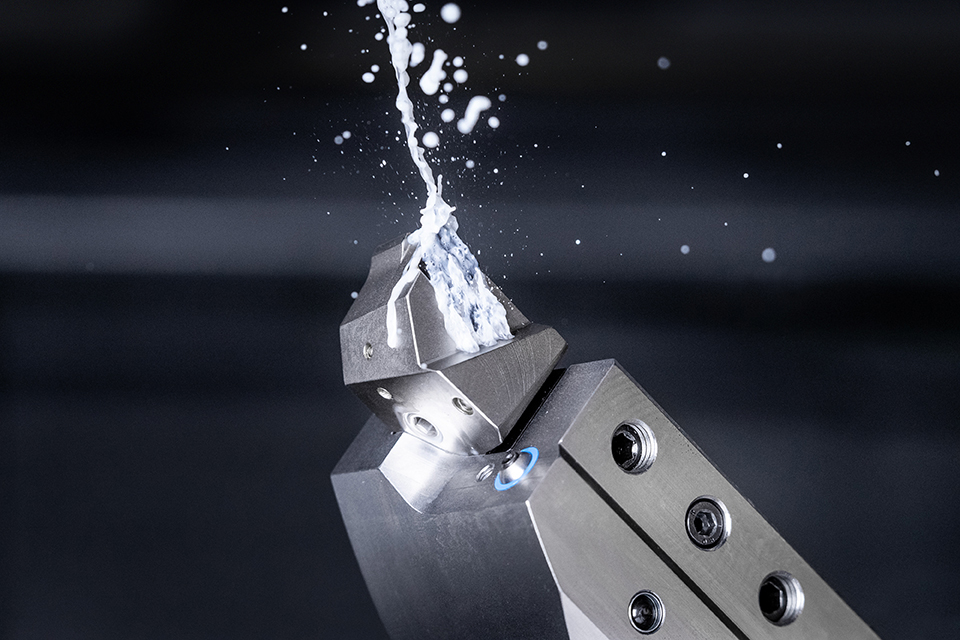
Ceratizit
CERATIZIT recently enhanced its new MaxiLock-N turning toolholders by incorporating the company’s DirectCooling technology.
The MaxiLock-N turning toolholders incorporate two internal coolant holes that aim coolant directly at the cutting edge to prevent wear and ensure stable processes. Using these coolant holes, nozzles direct coolant to the clamping flat from above as well as from below to the flank. This additional flank cooling contributes to the tool’s ability to extend tool life by 60% compared to tools that cool only at the clamping flat.
To avoid interference with workpiece contours, the lengths of DirectCooling Series holders are ideally matched to one another and offer optimal stability and unlimited flexibility. This flexibility is further enhanced with the HSK-T universal standard interface for turning tools that ensures a straightforward connection to multifunction machining centers, such as those performing both milling and turning operations.
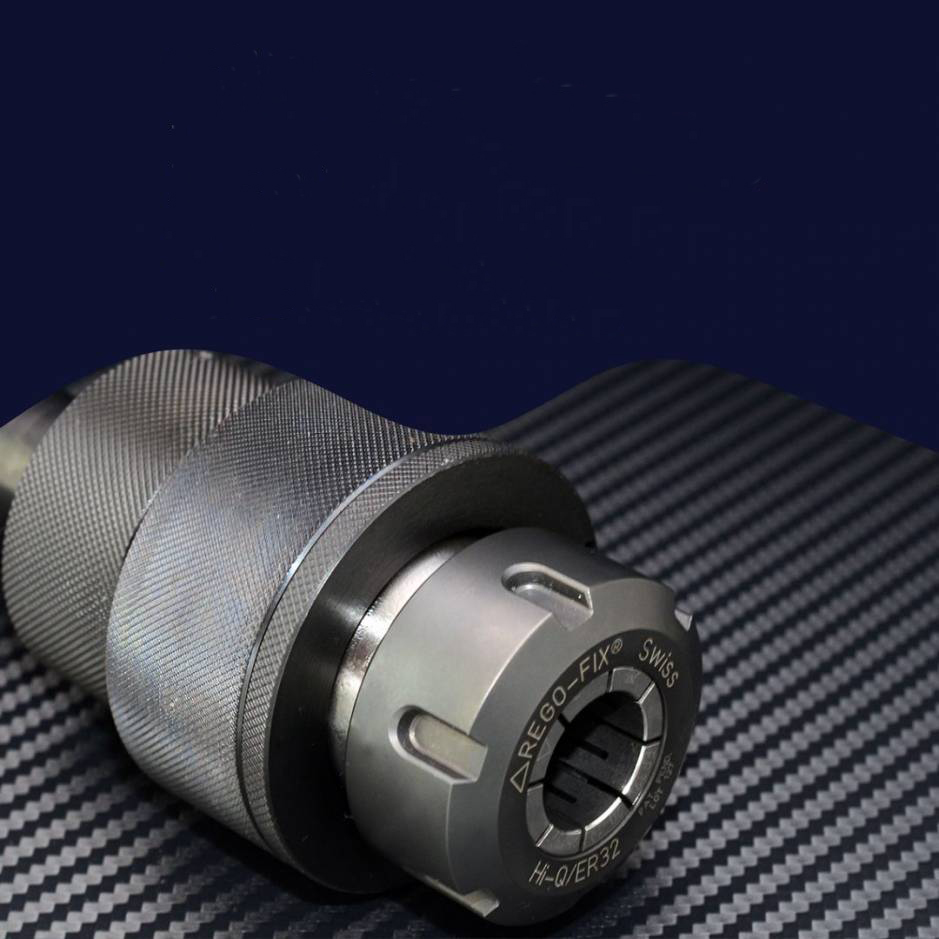
Japan USA Precision Tools
The new Takezawa-Seiki FHN Series floating holders from Japan USA Precision Tools, Bellflower, California, are said to follow the smallest offset to improve single-pass honing accuracy and extend tool life.
Designed specifically for one-pass honing, the FHN Series method compensates for small offsets such as tilt between the center axis of the tool and the pilot hole. By correcting the offset that occurs when attaching and detaching tools with the holder, it is now possible to achieve higher precision machining, according to the company.
In honing, where very high precision is required, even small deviations between the center of the tool and the center of the pilot hole can have a significant impact on machining accuracy, quality and tool life.
Takezawa Seiki's floating holder eliminates variations in quality and load on the tool by maintaining a constant transmission torque, according to the company.
The FHN Series is available in North America by visiting this online shop: https://SocalSpecialtyTools.com. Available models include the FHNS12C1 12 mm Shank with ER20 Collet and the FHNS25C2 25 mm Shank with ER32 Collet.
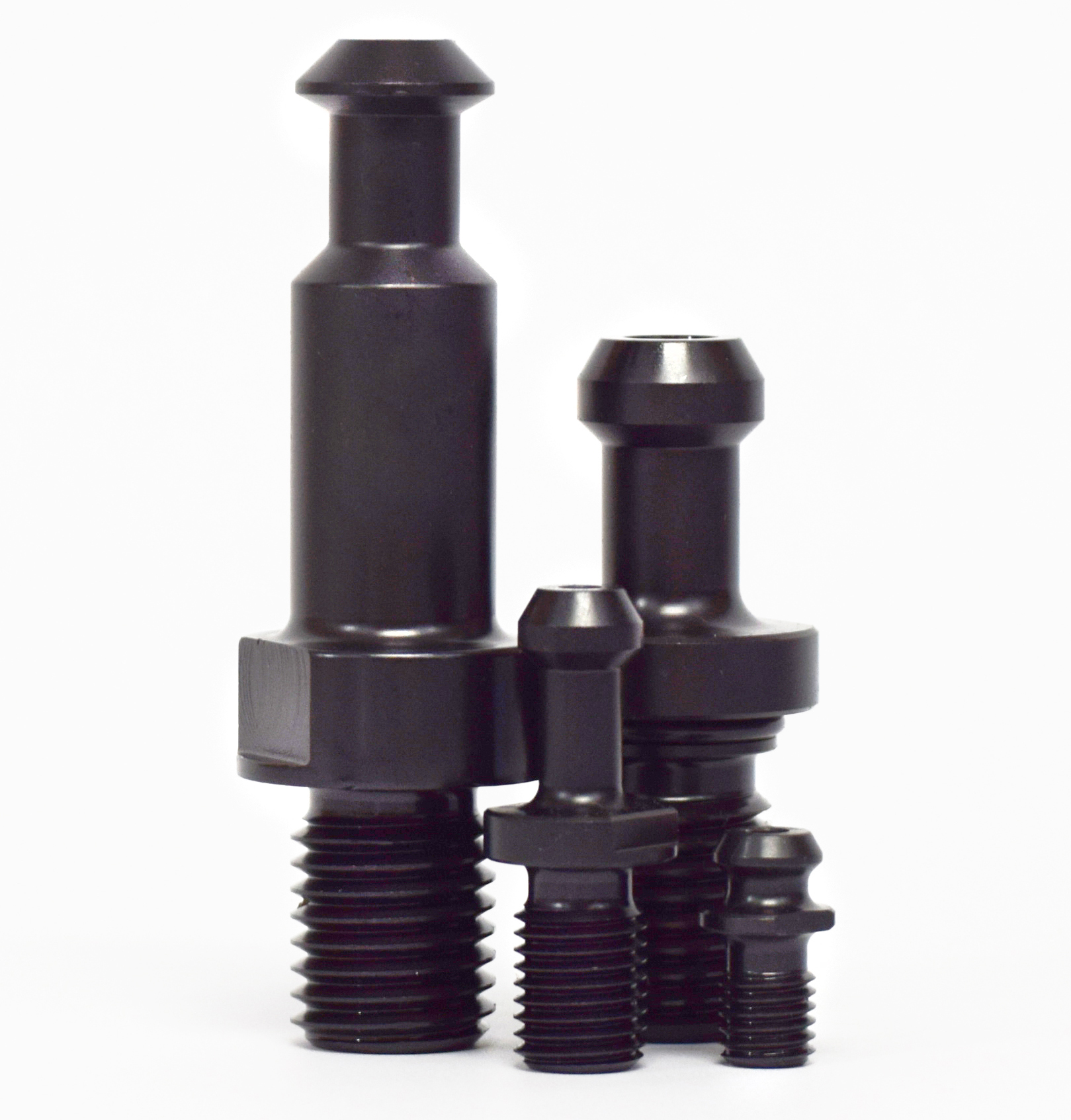
T.J. Davies
T.J. Davies Co. Inc., Mantua, Ohio, produces custom retention knobs, pull bolts and other workholding components and accessories to fit older, or obsolete machinery. All dimensions of knobs can be customized, including length, diameter, thickness of collars, dimensions between collar and knob end, thread size, and more.
Additionally, customers can specify a coolant hole, taper style, and whether O-rings are required. Custom made retention knobs are sized to fit the machine tool and spindle or toolholder to maximize the toolholder’s performance and cutting tool life and extend the life of existing machine tool assets.
All T.J. Davies custom retention knobs are manufactured from American-made 8620 alloy steel, which has a high tensile strength to withstand strong centrifugal force, high load force and high feed rate. All knobs are machined in-house with single point threading to Imperial (Class 2A UNC) or Metric (Class G6) standards. After threading is completed, each component is heat treated to 58-62 HRC then treated with hot black oxide to military specifications for protection against corrosion.
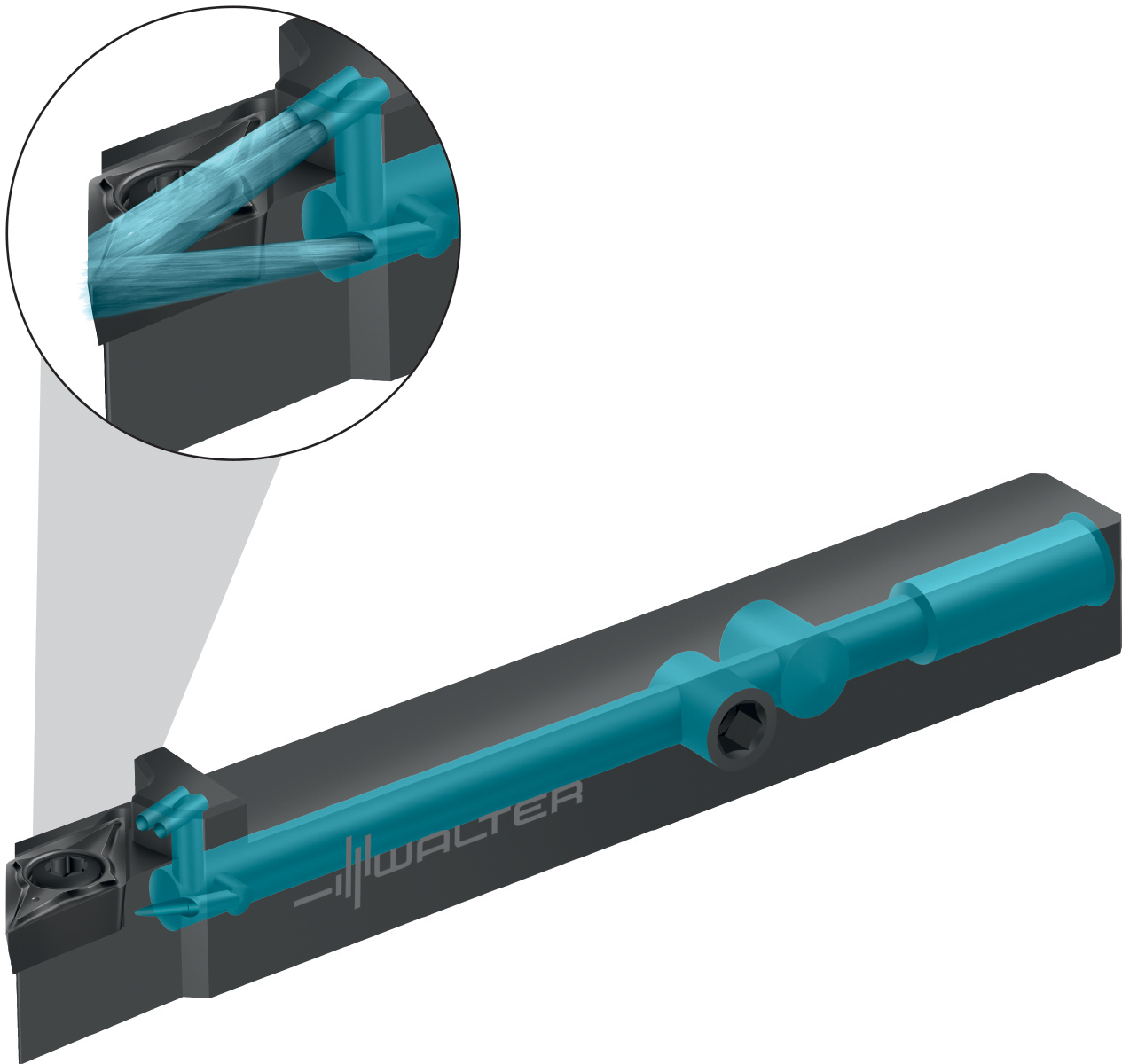
Walter USA
With its new Walter Turn Swiss toolholders for turning applications, the company is targeting applications on Swiss-style automatic lathes and multi-spindle machines that have up to 2,175 psi (150 bar) of coolant pressure. The holders are suitable for turning high-precision parts, longitudinal (axial) turning, facing and copy turning small-diameter components.
The holder provides targeted clearance face cooling for efficient chip control and increased tool life in addition to high precision cooling on the flank face to slow down insert heat and wear. The holders feature a flexible coolant connection in three positions for either external plumbing or thru-coolant introduction through lathe turrets.
The holders accept CCGT3xx, DCGT3xx and VCGT2xx indexable inserts and provide a high level of indexing accuracy even when turning parts with tight tolerance specifications. The short head dimension enables short clamping and high stability. The shank dimensions are 12 mm × 12 mm and 16 mm × 16 mm.
Potential benefits include less downtime caused by bird nesting of chips thanks to the targeted clearance face cooling and long tool life even when turning heat-resistant workpiece materials due to the cooled cutting edge.
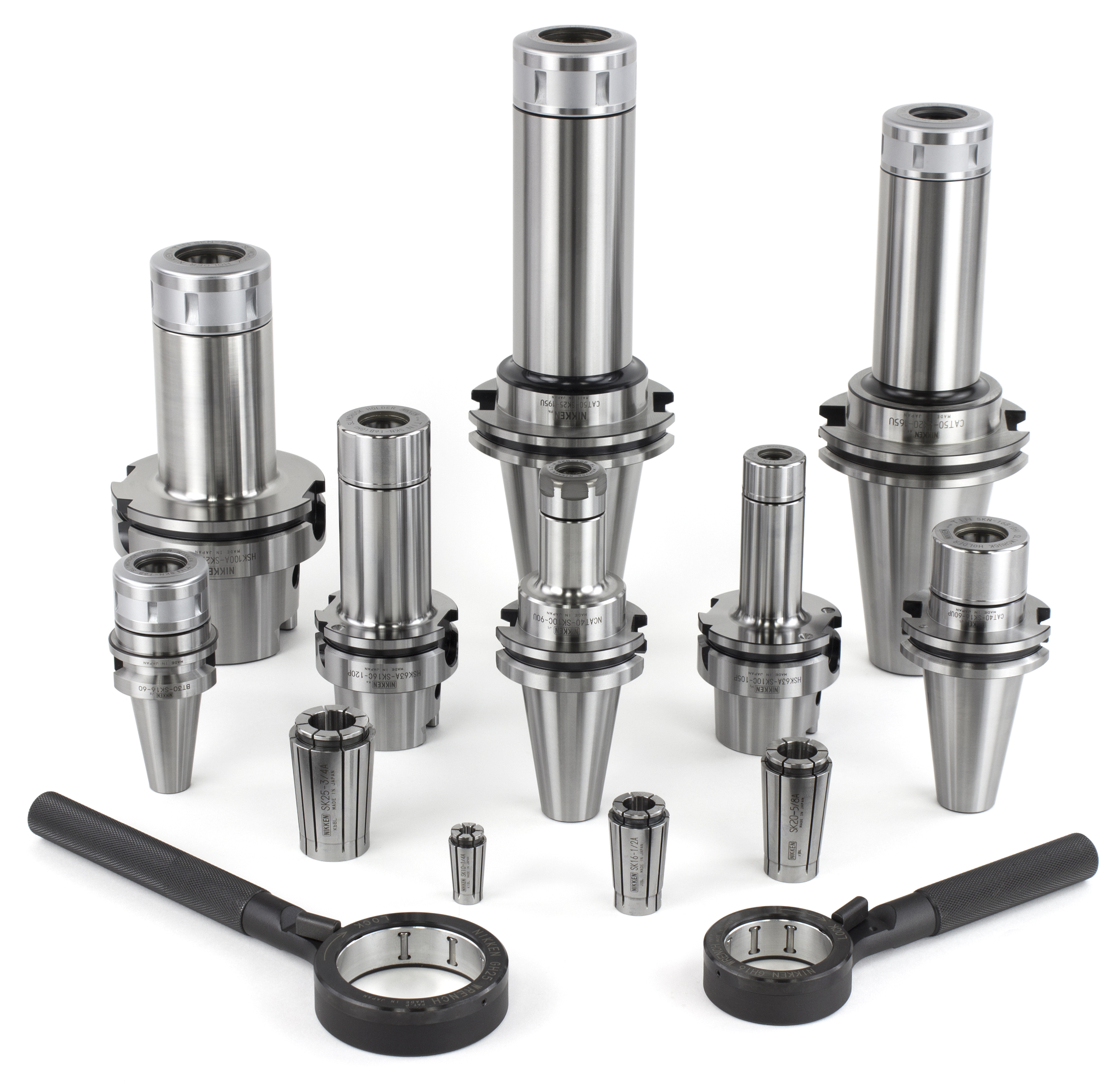
Lyndex-Nikken
An advanced design of SK collet chucks from Lyndex-Nikken, Mundelein, Illinois, are said to optimize machine tool performance by requiring fewer collet chuck changes and improved workpiece surface finish.
The advanced design of the SK collet chuck provides increased rigidity and gripping force as well as the ability to reach tight spaces. A special heat treatment, grinding and custom slotting process enables Lyndex-Nikken to guarantee a 5 micron run-out tolerance for their "on size" fractional and metric size precision collets.
A titanium nitride (TiN) bearing nut improves rigidity as the uniquely designed gold ring reduces collet damage and micro vibration with the collet flange, according to the company. It also eliminates friction with the collet.
The taper angle provides increased gripping power as the SK collet chuck’s 8-degree collet seats deeper in the body of the holder, providing double the clamping force and precision than traditional 16-degree collets. The narrow body of the SK collet chuck allows for access to tight spaces and provides better clearance making it ideal for machining complex parts.
Contact Details
Contact Details
Contact Details
Contact Details
Contact Details
Contact Details
Contact Details
Related Glossary Terms
- black oxide
black oxide
Black finish on a metal produced by immersing it in hot oxidizing salts or salt solutions.
- boring
boring
Enlarging a hole that already has been drilled or cored. Generally, it is an operation of truing the previously drilled hole with a single-point, lathe-type tool. Boring is essentially internal turning, in that usually a single-point cutting tool forms the internal shape. Some tools are available with two cutting edges to balance cutting forces.
- boring bar
boring bar
Essentially a cantilever beam that holds one or more cutting tools in position during a boring operation. Can be held stationary and moved axially while the workpiece revolves around it, or revolved and moved axially while the workpiece is held stationary, or a combination of these actions. Installed on milling, drilling and boring machines, as well as lathes and machining centers.
- centers
centers
Cone-shaped pins that support a workpiece by one or two ends during machining. The centers fit into holes drilled in the workpiece ends. Centers that turn with the workpiece are called “live” centers; those that do not are called “dead” centers.
- chuck
chuck
Workholding device that affixes to a mill, lathe or drill-press spindle. It holds a tool or workpiece by one end, allowing it to be rotated. May also be fitted to the machine table to hold a workpiece. Two or more adjustable jaws actually hold the tool or part. May be actuated manually, pneumatically, hydraulically or electrically. See collet.
- clearance
clearance
Space provided behind a tool’s land or relief to prevent rubbing and subsequent premature deterioration of the tool. See land; relief.
- collet
collet
Flexible-sided device that secures a tool or workpiece. Similar in function to a chuck, but can accommodate only a narrow size range. Typically provides greater gripping force and precision than a chuck. See chuck.
- coolant
coolant
Fluid that reduces temperature buildup at the tool/workpiece interface during machining. Normally takes the form of a liquid such as soluble or chemical mixtures (semisynthetic, synthetic) but can be pressurized air or other gas. Because of water’s ability to absorb great quantities of heat, it is widely used as a coolant and vehicle for various cutting compounds, with the water-to-compound ratio varying with the machining task. See cutting fluid; semisynthetic cutting fluid; soluble-oil cutting fluid; synthetic cutting fluid.
- feed
feed
Rate of change of position of the tool as a whole, relative to the workpiece while cutting.
- flat ( screw flat)
flat ( screw flat)
Flat surface machined into the shank of a cutting tool for enhanced holding of the tool.
- gang cutting ( milling)
gang cutting ( milling)
Machining with several cutters mounted on a single arbor, generally for simultaneous cutting.
- grinding
grinding
Machining operation in which material is removed from the workpiece by a powered abrasive wheel, stone, belt, paste, sheet, compound, slurry, etc. Takes various forms: surface grinding (creates flat and/or squared surfaces); cylindrical grinding (for external cylindrical and tapered shapes, fillets, undercuts, etc.); centerless grinding; chamfering; thread and form grinding; tool and cutter grinding; offhand grinding; lapping and polishing (grinding with extremely fine grits to create ultrasmooth surfaces); honing; and disc grinding.
- lathe
lathe
Turning machine capable of sawing, milling, grinding, gear-cutting, drilling, reaming, boring, threading, facing, chamfering, grooving, knurling, spinning, parting, necking, taper-cutting, and cam- and eccentric-cutting, as well as step- and straight-turning. Comes in a variety of forms, ranging from manual to semiautomatic to fully automatic, with major types being engine lathes, turning and contouring lathes, turret lathes and numerical-control lathes. The engine lathe consists of a headstock and spindle, tailstock, bed, carriage (complete with apron) and cross slides. Features include gear- (speed) and feed-selector levers, toolpost, compound rest, lead screw and reversing lead screw, threading dial and rapid-traverse lever. Special lathe types include through-the-spindle, camshaft and crankshaft, brake drum and rotor, spinning and gun-barrel machines. Toolroom and bench lathes are used for precision work; the former for tool-and-die work and similar tasks, the latter for small workpieces (instruments, watches), normally without a power feed. Models are typically designated according to their “swing,” or the largest-diameter workpiece that can be rotated; bed length, or the distance between centers; and horsepower generated. See turning machine.
- micron
micron
Measure of length that is equal to one-millionth of a meter.
- milling
milling
Machining operation in which metal or other material is removed by applying power to a rotating cutter. In vertical milling, the cutting tool is mounted vertically on the spindle. In horizontal milling, the cutting tool is mounted horizontally, either directly on the spindle or on an arbor. Horizontal milling is further broken down into conventional milling, where the cutter rotates opposite the direction of feed, or “up” into the workpiece; and climb milling, where the cutter rotates in the direction of feed, or “down” into the workpiece. Milling operations include plane or surface milling, endmilling, facemilling, angle milling, form milling and profiling.
- precision machining ( precision measurement)
precision machining ( precision measurement)
Machining and measuring to exacting standards. Four basic considerations are: dimensions, or geometrical characteristics such as lengths, angles and diameters of which the sizes are numerically specified; limits, or the maximum and minimum sizes permissible for a specified dimension; tolerances, or the total permissible variations in size; and allowances, or the prescribed differences in dimensions between mating parts.
- shank
shank
Main body of a tool; the portion of a drill or similar end-held tool that fits into a collet, chuck or similar mounting device.
- slotting
slotting
Machining, normally milling, that creates slots, grooves and similar recesses in workpieces, including T-slots and dovetails.
- tensile strength
tensile strength
In tensile testing, the ratio of maximum load to original cross-sectional area. Also called ultimate strength. Compare with yield strength.
- threading
threading
Process of both external (e.g., thread milling) and internal (e.g., tapping, thread milling) cutting, turning and rolling of threads into particular material. Standardized specifications are available to determine the desired results of the threading process. Numerous thread-series designations are written for specific applications. Threading often is performed on a lathe. Specifications such as thread height are critical in determining the strength of the threads. The material used is taken into consideration in determining the expected results of any particular application for that threaded piece. In external threading, a calculated depth is required as well as a particular angle to the cut. To perform internal threading, the exact diameter to bore the hole is critical before threading. The threads are distinguished from one another by the amount of tolerance and/or allowance that is specified. See turning.
- titanium nitride ( TiN)
titanium nitride ( TiN)
Added to titanium-carbide tooling to permit machining of hard metals at high speeds. Also used as a tool coating. See coated tools.
- tolerance
tolerance
Minimum and maximum amount a workpiece dimension is allowed to vary from a set standard and still be acceptable.
- toolholder
toolholder
Secures a cutting tool during a machining operation. Basic types include block, cartridge, chuck, collet, fixed, modular, quick-change and rotating.
- turning
turning
Workpiece is held in a chuck, mounted on a face plate or secured between centers and rotated while a cutting tool, normally a single-point tool, is fed into it along its periphery or across its end or face. Takes the form of straight turning (cutting along the periphery of the workpiece); taper turning (creating a taper); step turning (turning different-size diameters on the same work); chamfering (beveling an edge or shoulder); facing (cutting on an end); turning threads (usually external but can be internal); roughing (high-volume metal removal); and finishing (final light cuts). Performed on lathes, turning centers, chucking machines, automatic screw machines and similar machines.



